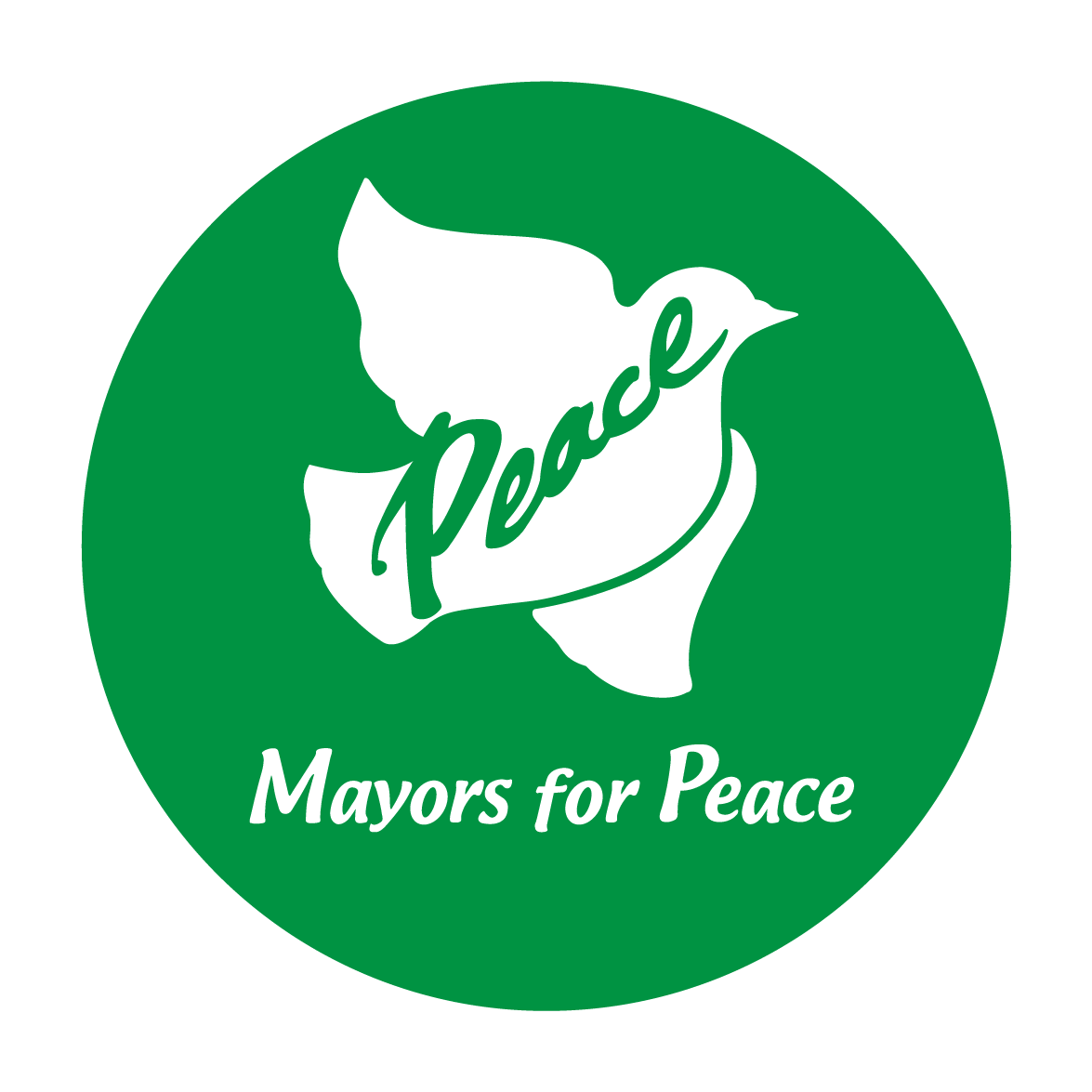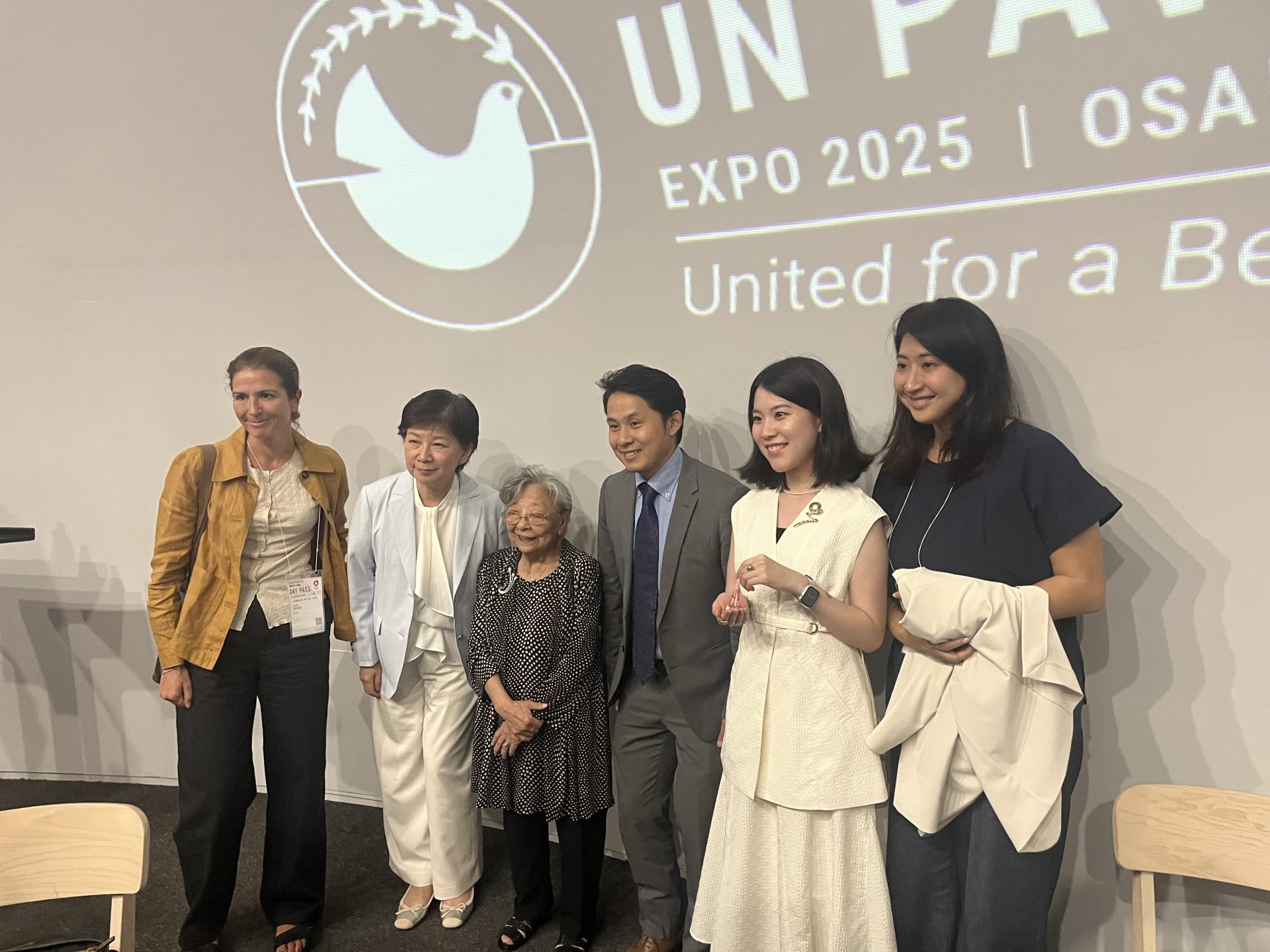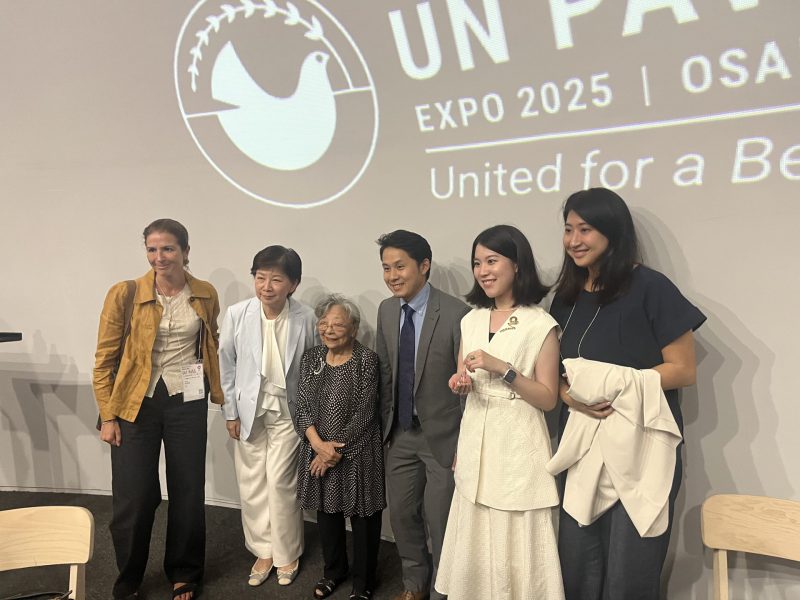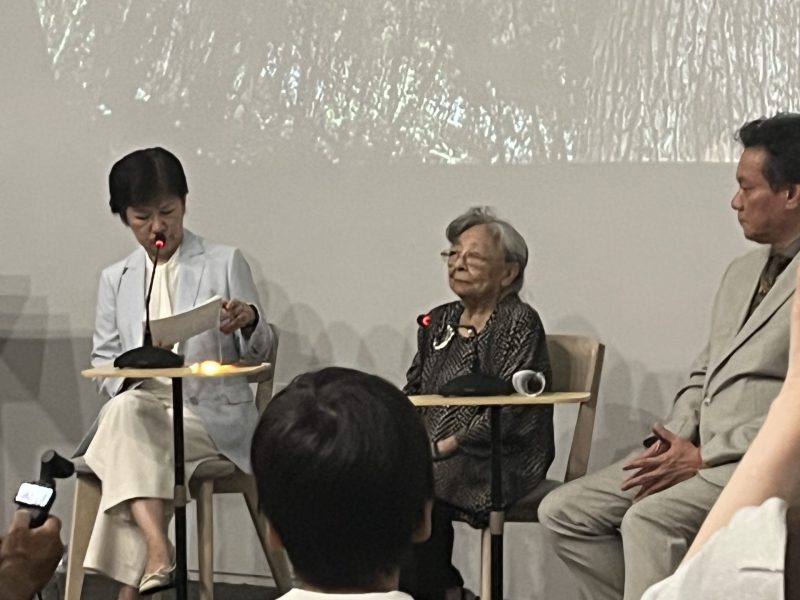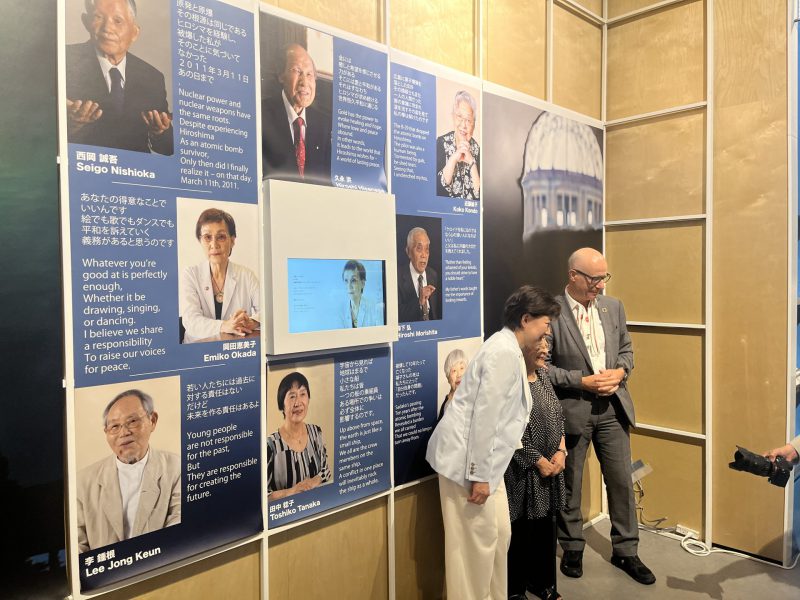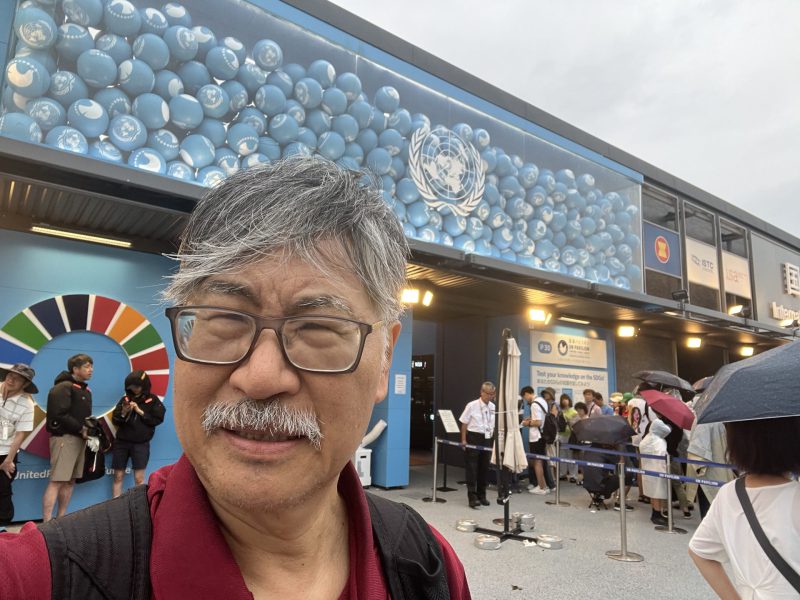Report by Mr. Tsutomu (Tom) Kono, Executive Advisor, Hiroshima Peace Culture Foundation
On August 12, the United Nations Pavilion at Expo 2025 Osaka-Kansai held a panel discussion entitled “Intergenerational Dialogue on the Legacy of Nuclear Weapons” in the pavilion’s Immersion Theater. The event, moderated by Ms. Izumi Nakamitsu, UN High Representative for Disarmament Affairs, focused on the role of art and storytelling in preserving the legacy of the atomic bombings. It featured a talk by Koko Kondo, who was eight months old when the atomic bomb was dropped on Hiroshima, and introduced the efforts of the younger generation to pass on the remembrance of the atomic bombings.
Koko Kondo is the daughter of Rev. Kiyoshi Tanimoto, one of six atomic bomb survivors whose experiences were featured by John Hersey in the August 31, 1946 issue of The New Yorker magazine entitled “Hiroshima”. In her 30-minute testimony, Kondo spoke of her moving encounter with the co-pilot of the Enola Gay, the B-29 bomber that dropped the atomic bomb on Hiroshima, and how this encounter transformed her from a girl who had grown up with hatred for America into a lifelong peace advocate.
Kondo was eight months old at the time of the atomic bomb in Hiroshima. Her home was just 1.1 kilometers from the hypocenter. While she miraculously survived, she grew up surrounded by women who were deeply wounded, both physically and mentally, including those left with keloid scars on their faces. She developed a deep hatred for the U.S. military that dropped the atomic bomb and harbored a desire to exact revenge one day. However, in 1995, at the age of 10, she visited the United States and met Robert A. Lewis, the co-pilot of the B-29 Enola Gay that dropped the atomic bomb on Hiroshima. Witnessing Lewis’ tears of remorse when he asked, “What have we done?”, her desire for revenge faded and she realized she should detest war itself. I had met Ms. Kondo before, but listening to her story at the Expo site once again reaffirmed the importance of conveying to future generations the impact of the atomic bombing on humanity and the power of reconciliation.
Kondo’s father, Kiyoshi Tanimoto, was an American-educated Methodist pastor who returned to Japan in 1943 and settled in Hiroshima during World War II. John Hersey’s reportage, “Hiroshima,” was published as a book and was the first to convey the devastation of Hiroshima to the world, sending shock waves through American society. This publication also made Tanimoto famous, and he toured the United States over 15 months, giving 582 lectures in 31 states. His interactions with prominent figures during this tour led to the establishment of the Moral Adaptation Program, a program to support atomic bomb orphans. On May 11, 1955, Tanimoto unexpectedly appeared on the popular American television show “This Is Your Life,” where he had the awkward experience of meeting Captain Robert A. Lewis, the co-pilot of the Enola Gay that dropped the bomb on Hiroshima. However, the visit of Tanimoto’s entire family to the United States to appear on the program inspired his daughter Koko to pursue a career as a peace activist, following in her father’s footsteps and dedicating herself to passing on the story of the atomic bombing.
Also participating in the panel discussion was Anju Niwata of Hiroshima Television, who presented a project using artificial intelligence to colorize black-and-white photos from the time of the atomic bombing, as an example of “digital storytelling” that preserves the legacy of the atomic bombings through art, offering a new way to connect with the past. The event was held as an important part of the Expo’s theme week, “Peace, Human Security and Dignity,” which ran from August 1 to 12, 2025. During this period, the United Nations Office for Disarmament Affairs hosted a special exhibition in the UN Pavilion, showcasing personal experiences and perspectives on disarmament. The exhibition also included a video with the hashtag “#MyDisarmamentStory,” which uses the voices of atomic bomb survivors and others from around the world to discuss the meaning of disarmament and the importance of achieving its goals.
Photos: courtesy of Mr. Kono, Executive Advisor
